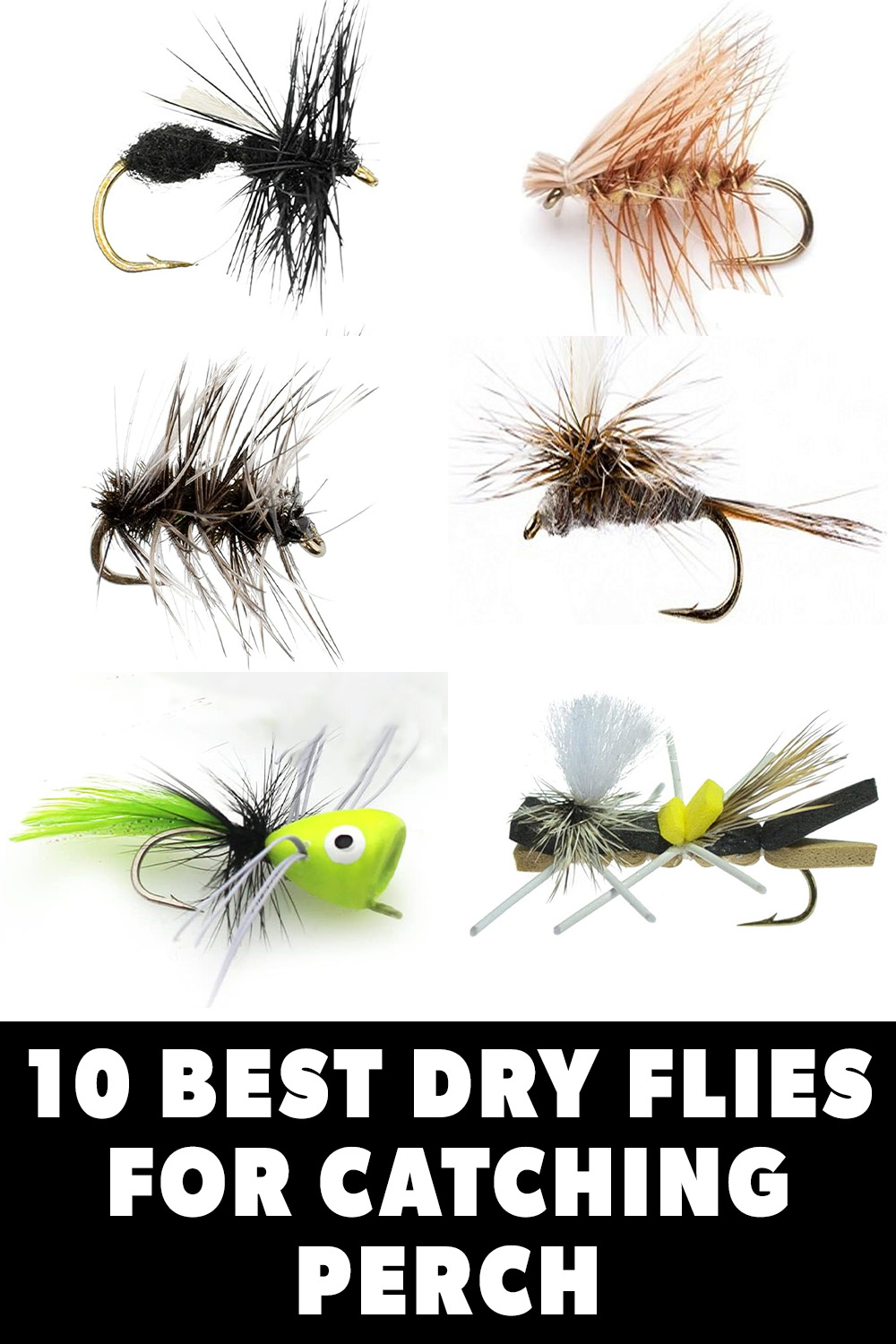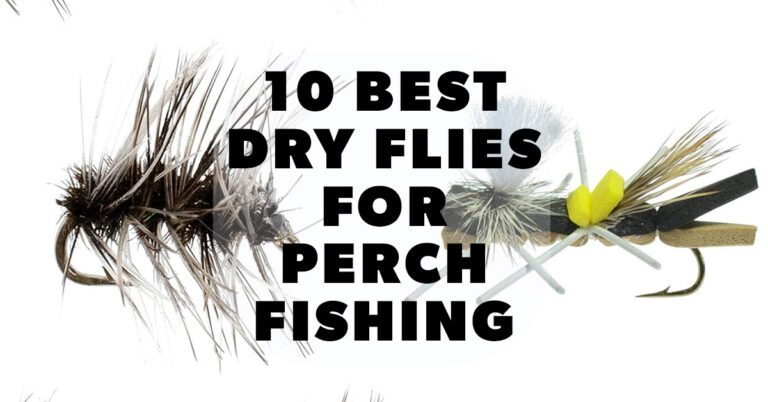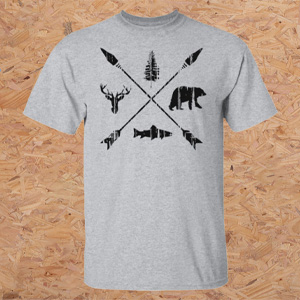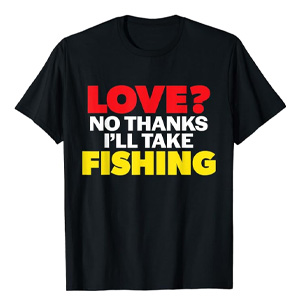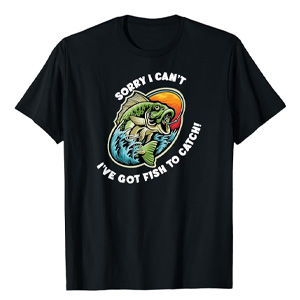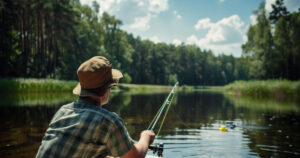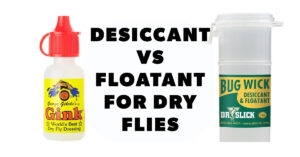Up Your Excitement Level Dry Fly Fishing For Perch
Fly fishing can be quite a thrill, but not much makes a person’s heart race like watching your dry fly disappear beneath the water. If you have been fishing for perch and haven’t tried dry flies for them, you are missing out on the fun!
Below are the top 10 dry flies that I’d suggest you throw in your kit when you go out fly fishing next. Don’t have a fly rod? Scroll to the bottom for some tips on fly fishing for perch with a spinning rod.
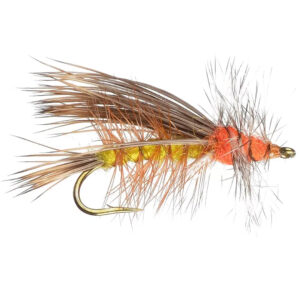
Stimulator Dry Fly
Stimulator flies are excellent for perch fishing because they imitate a wide range of insects, making them versatile and effective throughout the season. Their high visibility and buoyancy also make them easy for perch to spot and take on the surface.
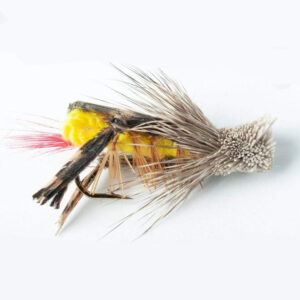
Hopper Dry Fly
Hoppers are a great choice for perch, especially during summer months when grasshoppers are abundant near shorelines and meadows. The variety of hopper patterns allows you to match the size and color of grasshoppers in your area, increasing your chances of a strike.
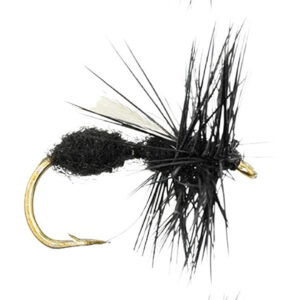
Black Ant Dry Fly
Black ant dry flies are a near universal favorite for perch anglers. Ants are a constant presence on the water’s surface, and perch readily gobble them up. The simple black color makes these flies easy to tie and effective throughout the season, mimicking the real insects that inevitably fall victim to the water.
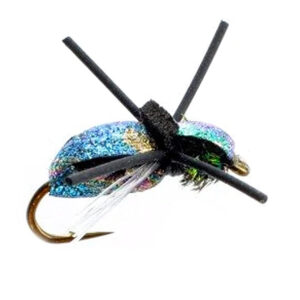
Beetle Flies
Foam beetle flies offer a realistic and highly visible imitation of terrestrial beetles that frequently fall into the water. Their buoyancy makes them float well, and the slight “plop” they make when hitting the surface can trigger aggressive strikes from hungry perch.
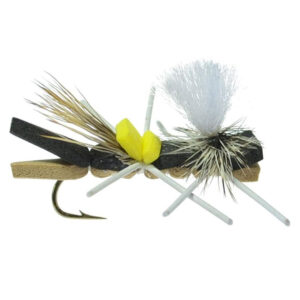
Chernobyl Ant Fly
Chernobyl Ant flies are a top performer for perch thanks to their large size and variety of color patterns. These foam flies sit high on the water, offering exceptional visibility that attracts even the biggest perch. With so many variations available, you can experiment to find the perfect combination for your local waters.
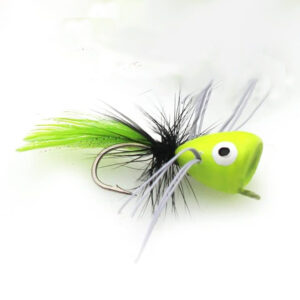
Foam Popper Fly
Foam poppers are exciting to fish and incredibly effective for perch. Their popping and gurgling action on the surface imitates struggling baitfish or insects, attracting perch with both noise and visual cues. Choose bright colors and sizes appropriate for the perch in your area.
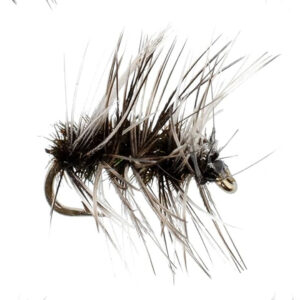
Griffith's Gnat Fly
Griffith’s Gnats excel as perch flies because they offer a simple yet convincing imitation of midges and gnats, which are a staple food source for perch. Their small size is ideal for matching the hatch, and they work well throughout the season, especially when other food sources are less abundant.
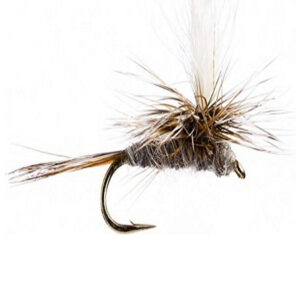
Parachute Adams Flies
The Parachute Adams is a classic dry fly that consistently catches perch. Its versatility allows it to imitate a wide range of mayfly species, and the parachute design keeps it floating high and visible on the water. This fly is a must-have in any perch angler’s box.
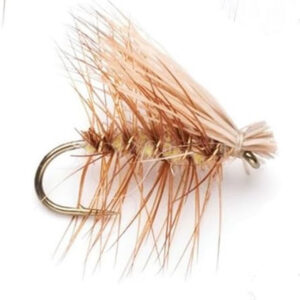
Elk Hair Caddis Flies
Elk Hair Caddis flies are a reliable choice for perch because they imitate the abundant caddisfly, a major food source. Their wing design keeps them riding high in the water, offering a realistic profile to opportunistic perch. Experiment with different body and wing colors to find what works best in your area.
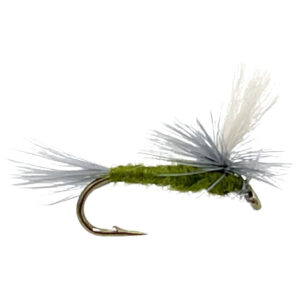
Blue Wing Olive Flies
Blue Wing Olive flies are a staple for perch fishing, as the small, delicate mayflies they imitate are a frequent and favored food source. These flies are particularly effective during hatches, so be sure to select colors and sizes that accurately match the natural insects in your region.
What Size Of Fly To Use For Perch?
For the best results when fishing for perch with dry flies, stick to sizes #12 to #16. These smaller flies better represent the insects perch normally eat. However, if you’re targeting larger perch or notice a hatch of bigger insects, you can adjust with a size #10.
How To Keep Your Flies Floating
There are a lot of tricks to keeping your dry flies floating. Drying them off occasionally helps, but you should also consider using a treatment to keep your dry flies floating like they should. Floatants are a common option, and they come in gels, liquids, or paste form. These products create a water-repellant layer on your fly to enhance buoyancy. Popular choices include Gink and Loon Lochsa.
Another effective treatment is a desiccant. Desiccants are drying agents that quickly absorb moisture from your fly. They often come in powder form. Simply place your wet fly in a container with the desiccant for a few seconds, and it’ll be ready to go. Desiccants are a great way to quickly revive a waterlogged fly and get it back in the fishing zone.
Fly Fishing For Perch With A Spinning Rod
Just because you don’t have a fly fishing setup, it doesn’t mean you can’t have the fun of fishing for perch with dry flies. Here’s how to set up your rig for perch-catching success.
A light or ultralight spinning rod with fast action is best for casting lightweight flies and bobbers.
Opt for a 4-6 lb test monofilament or braid as your mainline. Clear or light green colors are preferable.
A torpedo-style float provides weight for casting but still offers sensitivity. Choose a size to match the weight of your fly.
Attach a 2-3 foot leader of 4 lb test fluorocarbon to your mainline. Fluorocarbon is less visible underwater, increasing your chances.
Use any of the top 10 perch dry flies mentioned earlier in sizes #12-#16.
Cast beyond where you see fish and gently pull the rig towards you to mimic a natural insect drift. Keep a close eye on the bobber for subtle dips, twitches, or full submersions that indicate a strike. Set your hook quickly when you see the bobber go under!
What Time Of Year Is Best For Fishing For Perch With Dry Flies?
Early summer is a fantastic time for perch fishing with dry flies. The warmer water brings increased insect hatches, and perch become much more active near the surface. This activity often carries throughout the rest of the summer.
Late summer and early fall offer another great period for dry flies. Insect hatches pick up again, and the perch are feeding aggressively to bulk up before winter. Focus on early morning and evening fishing, as those are prime times for fish to feed near the surface.
While you can use dry flies throughout the year, keep an eye out for insect hatches and warmer water temperatures. These conditions will greatly increase your chances of catching perch on topwater.
